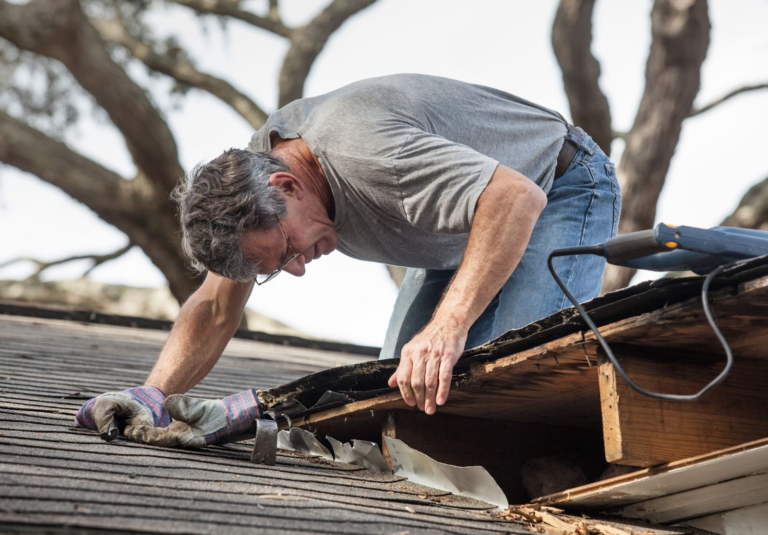Water damage can be one of the most harmful things to a home. It can not only damage the affected area but also spread to nearby vicinities. For instance, a damaged line in a wall or roof can ruin the entire area—requiring thousands of dollars in repairs.
It’s not too far-fetched either, as around 14,000 US citizens suffer from one sort of water damage to their home or another. So, what exactly is water damage, and how can it happen? Moreover, what are some of the best ways to deal with the issues that it leaves in its wake?
That’s what we’re here to find out, so let’s get started!
What is Water Damage? 6 Potential Kinds of Water Damage
Water damage is a result of leaks, infiltration of water from outer sources, or build-up of moisture in one way or another. In most cases, water damage refers to the leakage caused in drainage, plumbing, or issues with the culvert/gutters.
But here are six main reasons behind water damage in homes:
- Extensive water infiltration from external sources, causing widespread property damage;
- Water damage resulting from burst or leaking pipes within the home;
- Seepage through damaged roofing, leading to interior water damage;
- Water damage due to faulty appliances like dishwashers, washing machines, or refrigerators;
- Water accumulation in the basement, often due to poor drainage or heavy rain;
- And contaminated water entering the home from sewer system failures.
And if you suspect your house might have any of the aforementioned issues, then contact MidSouth Construction today. Our experts will figure out what potential water damage you might have and fix it. Then, we’ll also provide preventative measures for the future.
How To Assess & Repair Water Damage? 4 Key Steps To Take
Now it’s quite a straightforward process to repair water damage. But we’ve made it even easier for you. And you have two choices:
- Seek help from experts like MidSouth Construction;
- Or do a little DIY project with our assistance.
So, if you’re leaning towards the latter, here are four key steps that will help you assess and repair water damage:
1: Identify Damaged Areas
There are easy ways to tell if there is water damage around you. One of the first indicators of water damage in any household is rancid smells or the smell of mold around the area. The stronger the smell, the closer you are to identifying the damage.
However, here are 5 tips to help you find and assess the damaged areas quickly:
- Check for discoloration on walls and ceilings;
- Inspect musty odors indicative of mold growth;
- Look for peeling or bubbling paint;
- Examine warped or sagging floors;
- And investigate water stains on surfaces or materials.
These are quickfire ways to identify and find water-damaged areas in a home. Or, you could call experts of MidSouth Construction to recognize it for you.
2: Remove and Replace
The next phase is to remove and replace whatever is causing the issue. This phase depends entirely on the damaged area and the type of water damaged. For instance, a damaged pipe would require changing of pipes, fittings, etc.
However, here are four steps to identify the issue and then remove and replace it:
- Extract water with pumps and dehumidify to prevent mold.
- Remove damaged materials like drywall, insulation, or flooring.
- Treat affected areas with antimicrobial solutions to prevent mold.
- Replace damaged materials and ensure proper ventilation for prevention.
Then you’ll have to do a clean-up job, but the work is not done yet. So, move to the next step.
3: Repair Structural Elements
This step will focus on fixing the surrounding areas damaged by water. For instance, roofing might require new shingles and sealants. While walls might require a change of wood or other structural elements. Here are three tips to do this:
- Assess structural integrity to identify and address any weaknesses;
- Reinforce damaged areas with appropriate building materials and techniques;
- And ensure proper sealing and waterproofing to prevent future water damage.
This should ensure that none of the other elements remain affected by water damage.
4: Prevent Future Leaks
The final thing to do is ensure the water damage doesn’t happen in the future. Remember, water leaks or damage in water appliances is not the only cause. So, here are some preventative measures to take:
- Maintain proper ventilation and airflow;
- Regularly inspect and maintain gutters;
- Seal windows and doors effectively;
- Monitor and fix plumbing leaks promptly;
- And install a sump pump if necessary.
And thus, you’ll be done, or you can give us a call at MidSouth Construction to provide preventative measures for the future.
Conclusion
These are some of the key things to understand about water damage in a home and how homeowners can fix it. Focusing on these areas and using these repair techniques will surely help you fix the issue. But, if you’re unsure where to begin, then contact MidSouth Construction today, and we’ll tend to it all for you.

